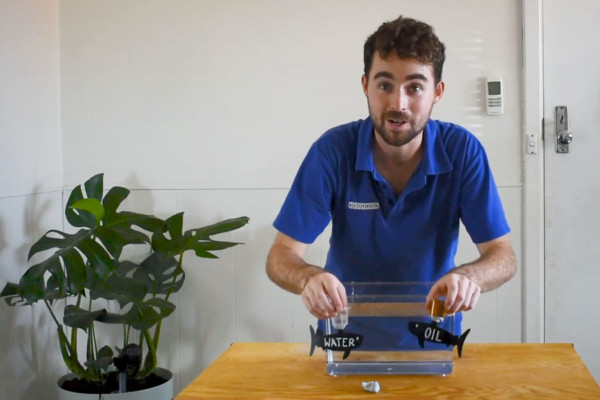
About Scitech
Scitech is a not-for-profit organisation proudly supported by the Western Australian Government through the Department of Jobs, Tourism, Science and Innovation
Watch Scitech Presenter Jae as she shows you how to make bubbles at home!
Learn to make your own bubble mixture at home!
This formula keeps your bubbles light and floaty and the addition of glycerin makes the mixture thicker, so you should be able to blow big, long-lasting bubbles. Can you see a rainbow in your bubble?
What you’ll need:
Instructions
Before you get started, make sure you’ve got a grown-up to help you with this experiment.
You should set your experiment up in a clean space, away from any electrical power sources or equipment.
If you’re doing this experiment outside, check that it isn’t too windy to avoid getting any bubble mixture blown into your eyes.
What are bubbles made of?
Bubbles are bits of gas or air trapped inside a liquid ball. This is made up of two thin films of soap, with water in between.
Bubbles always hold gas or liquid inside them, with the least possible surface area for any given volume, which is a sphere. Scientists refer to bubbles as “minimal surface structures”.
Why do we sometimes see rainbows on bubbles?
We see the colours on a bubble through the reflection and refraction of the light waves off the inner and outer surface of the bubble wall.
When white light (which contains all the colours of the rainbow) hits the soap films, it gets reflected back, but sometimes it spreads out into a spectrum – or a rainbow.
As the two waves of light (one from the inner surface and the other from the outer surface) travel back, they interfere with one another, causing what we know as colour.
When the waves reinforce each other, the colour is more intense. When the waves get close to cancelling each other out, there is almost no colour.
That’s why sometimes we can see rainbows on bubbles, and sometimes we can’t.
Looking for more activities to do at home?
Upon clicking the "Book Now" or "Buy Gift Card" buttons a new window will open prompting contact information and payment details.